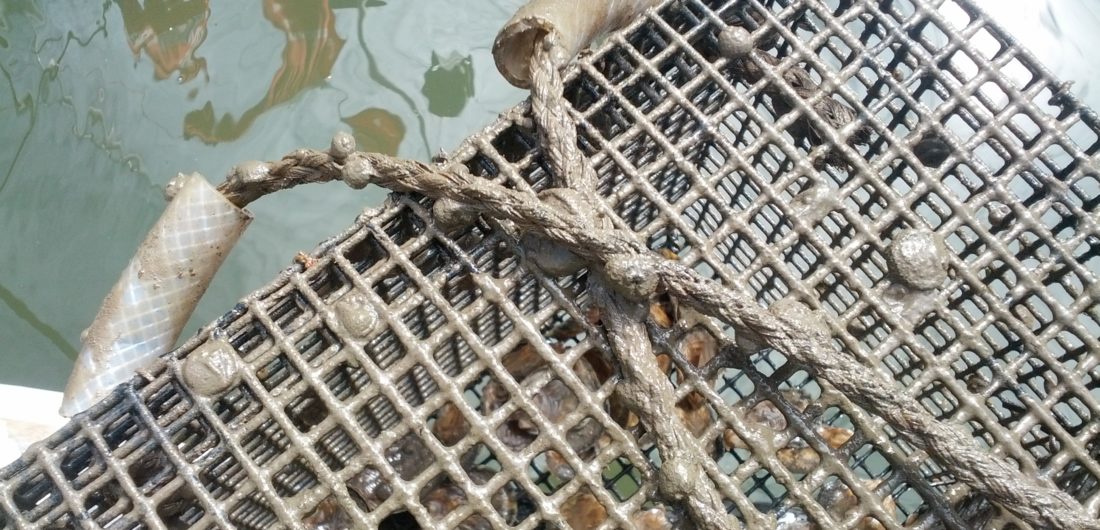It’s been one month since our oyster garden was dropped into New York harbor, and I stopped by to check the cage and make sure all was well. In the past, cages have been lost to vandalism or loose ropes, so it’s good to inspect it regularly and make sure it doesn’t get away. During summer months, there’s also greater algae and barnacle growth, which can impede the flow of water and nutrients into the cage if the cage isn’t cleaned.
My oyster cage was exactly where I’d left it (phew!) and after pulling it up, everything seemed to be much the way I’d left it. But wait, what are those little muddy knobs on the top of the cage and on the rope? It looked like there were bits of mud stuck to the cage, so I tried to pinch one off. Much to my surprise, not only did the “mud clump” stay solidly stuck to the cage, it squirted water at me!
I figured it was probably best to call it a day and leave the mystery squirters alone. Later, I consulted the list of “Commonly Seen Organisms in Oyster Gardens” provided by the Baykeepers. Under the “reef associates” category (not predators), I spotted my pocket-sized attacker: sea squirts, or tunicates. These are small, round, jelly-like animals with two or more siphons. They like to attach to hard substrates, like ropes and oyster nets. If you squeeze the sea squirt, it may shoot water at you from its siphons! Though their outer surfaces are usually covered in debris or algae, they can be white, orange, purple, red and many other colors. Some species are even used as food in Japan and Korea.
Stay tuned for more updates on the oyster garden as winter approaches!
